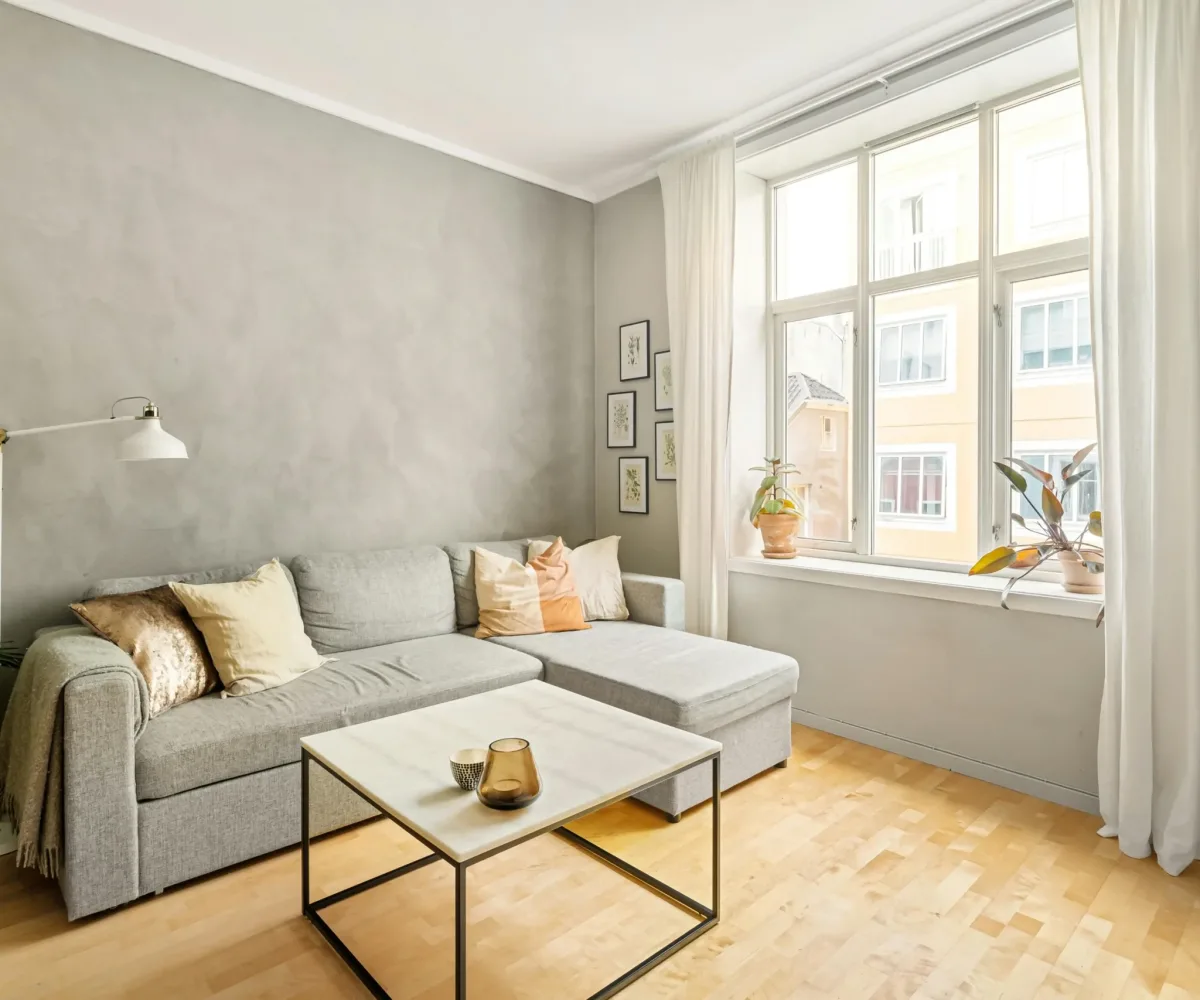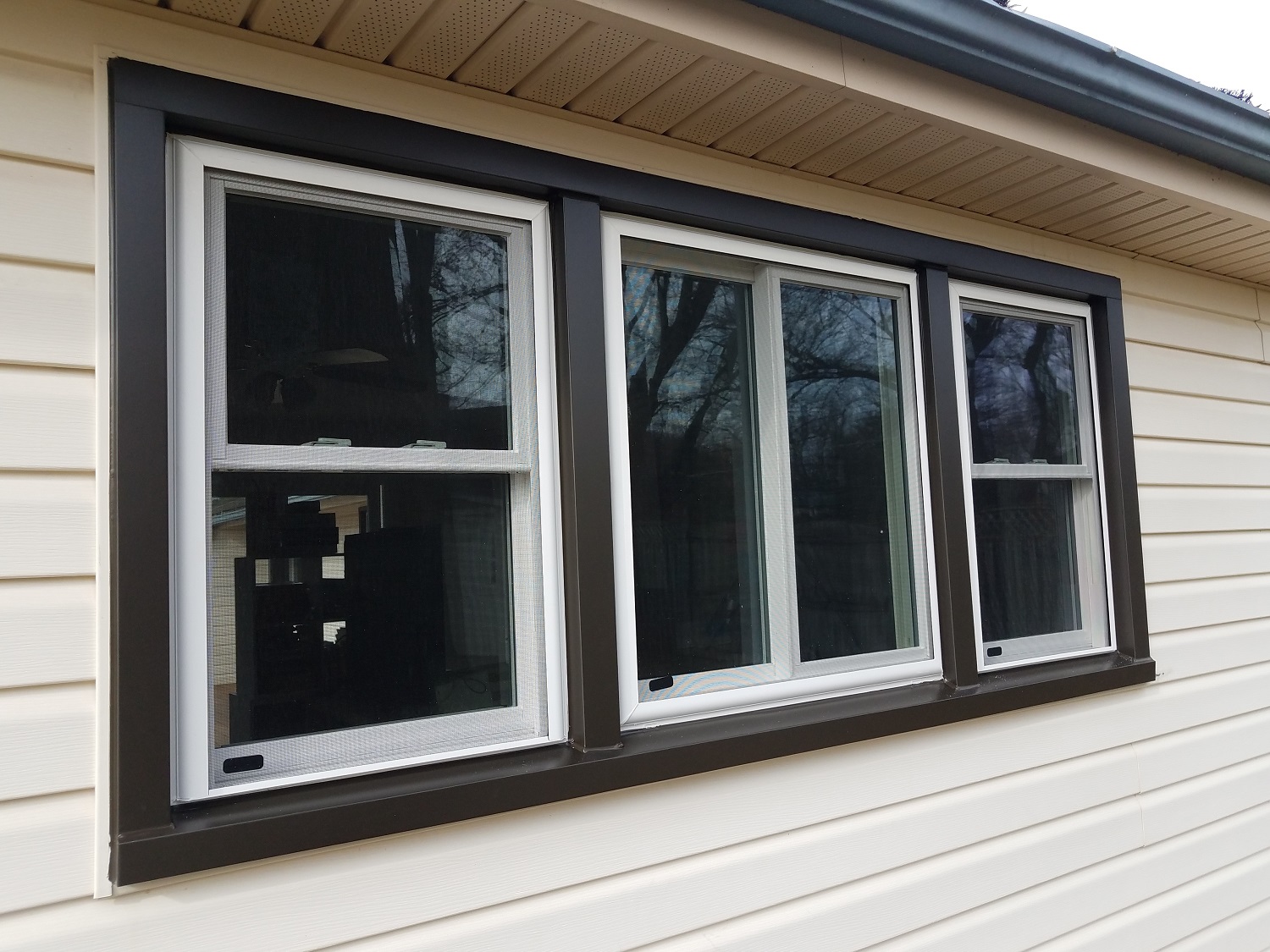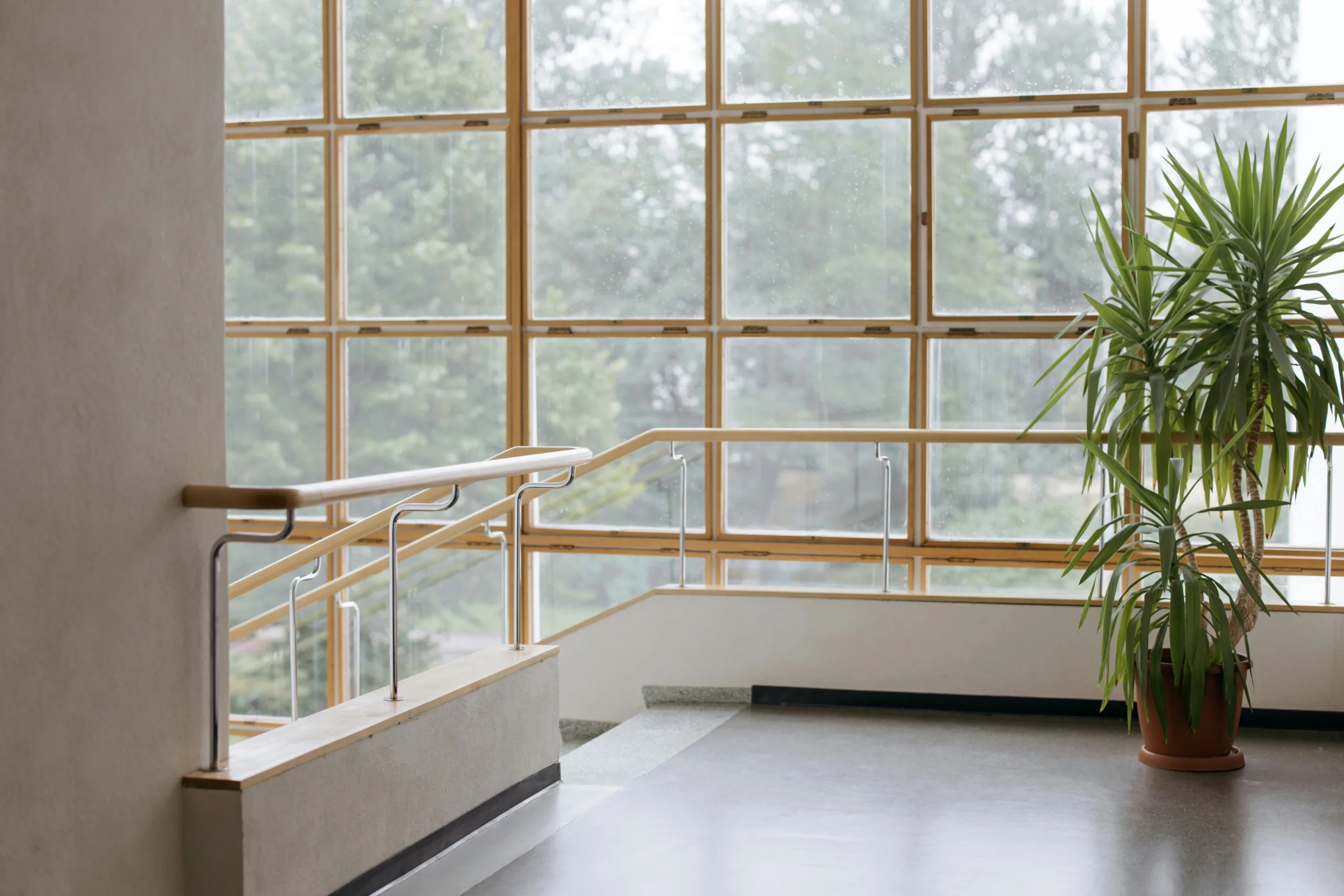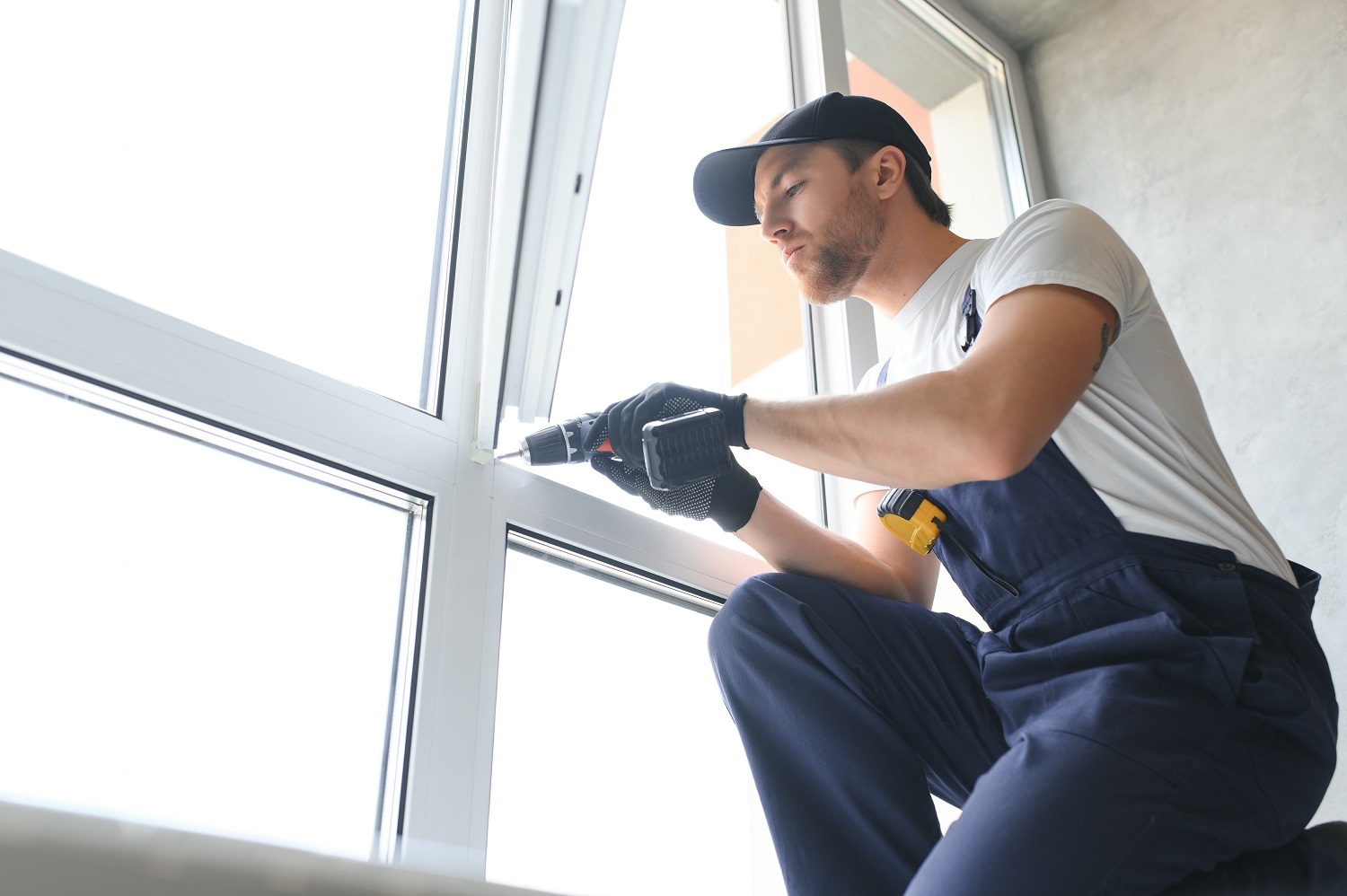
What is an Awning Window?
An awning window, named for its resemblance to an awning when open, is a unique type of window characterized by its top hinge mechanism, allowing it to open outward from the bottom. This thoughtful design facilitates efficient ventilation and provides a shield against rain, making it a convenient and versatile choice for various areas in a home or building. The awning window’s ability to offer airflow and weather protection simultaneously makes it an appealing option for those seeking functionality without compromising design aesthetics.
Awning windows are a popular choice in many types of architecture due to their functional and aesthetic flexibility. They are handy in climates where it rains frequently, allowing for fresh air without letting in water. Additionally, their secure design can provide extra safety over other window types that might be easier to pry open from the outside.
Common Uses of Awning Windows

Kitchen Use
Awning windows are an excellent and economically viable choice for kitchen installations. Their ease of operation makes them highly user-friendly, and their design allows for flexible placement on any kitchen wall or corner.
A significant advantage of installing these windows in the kitchen is their ability to be positioned at a higher elevation, which not only enhances privacy but also maximizes the entry of natural light, making the kitchen space brighter and more inviting.
Bathroom Use
For bathrooms, awning windows offer a simple yet efficient and cost-effective solution for ventilation and light. Their user-friendly design ensures easy operation, which is particularly useful in the often compact spaces of bathrooms. Additionally, these windows offer customization options, including various glass types and frame styles, enabling homeowners to match the window to their bathroom décor and functional requirements.
Basement Use
Basements typically have limited options for quality windows, but awning windows stand out as an ideal choice. They are easy to install and excel in maximizing the entry of natural light, which is often a challenge in below-ground spaces. Their design facilitates easy opening and closing, particularly in basements where window access can sometimes be restricted due to space constraints.
Bedroom Use
Awning windows have long been a favored option for bedrooms, particularly in traditional-style homes. They offer the convenience of being easily operable from the inside, which adds to their appeal. A notable feature is their 45-degree opening angle, strategically designed to prevent rain from entering the room, allowing occupants to enjoy the freshness of a cool breeze even during rainy weather.
This feature enhances the bedroom’s comfort and functionality, making awning windows a practical and attractive choice for this private space.
Material Options for Awning Window Frames

Awning windows, a type of window hinged at the top and opening outward, can be made from various materials. Each material offers different durability, maintenance, insulation, and aesthetics benefits. Here are the standard material options for awning window frames:
Aluminum
Aluminum frames are trendy for awning windows due to their sleek appearance characterized by thin lines and minimal borders. This design aligns well with modern interior and exterior home trends, making aluminum awning windows a fashionable choice for those who follow contemporary design movements.
Vinyl
Vinyl awning windows are another standard option. They offer superior durability and require less maintenance than their aluminum counterparts. However, their slightly bulkier and more traditional appearance may be less appealing to those looking for a modern aesthetic, placing them a step behind aluminum frames in terms of design preference.
Glass Types for Awning Windows
- Tempered Glass: Tempered glass is a popular choice for awning windows in many homes due to its strength and durability. Its high impact resistance makes it an ideal option for safety and longevity.
- Laminated Glass: Laminated glass, known for its safety features, is an expensive yet robust choice. It doesn’t shatter like tempered glass but stays intact even upon impact, making it highly valued for its enhanced safety characteristics.
- Insulated Glass: Insulated glass is the most efficient choice for awning windows. It provides excellent insulation against both sound and temperature, maintaining a comfortable indoor environment regardless of external weather conditions. This type of glass usually consists of two glass panels separated by a layer of inert gas like argon or krypton, which dramatically enhances its insulative properties.
- Plexiglass (Acrylic): Plexiglass, or acrylic, is an alternative glass type for awning windows. While not as common as the other types, it offers strength, durability, and affordability. Plexiglass requires some maintenance but visually resembles standard glass, making it a practical option for those looking to balance performance and cost.
Advantages of awning windows
Awning windows offer several advantages that make them a popular choice among homeowners.
- Enhanced Ventilation and Lighting: Awning windows, with their unique design, size, and placement, surpass traditional sliding windows in providing superior ventilation and lighting. They can remain open during rain, allowing cool air in while keeping the rain out, and their ability to stay open in varied conditions boosts home ventilation.
- Cost-Effectiveness: For those on a tight budget, awning windows are an economical choice. They are generally more affordable to purchase and install compared to other window types.
- Energy Efficiency: Awning windows excel in sealing your home against external weather, minimizing air leakage. This quality makes them more energy-efficient, potentially reducing electricity bills in both summer and winter.
- Increased Security: These windows offer enhanced security. Despite providing ample light and ventilation, their design makes them difficult to break into or open from outside.
- Design Versatility: Awning windows are highly adaptable in design, available in various materials, shapes, and sizes, such as wood, steel, fiberglass, aluminum, and vinyl. This variety caters to different budgets, stylistic preferences, and insulation needs.
Disadvantages of awning windows

While awning windows offer numerous advantages, they also have a few disadvantages to consider.
- Accident Hazard: Positioned in high-traffic areas on the first floor, the outward opening of awning windows can pose a collision risk, potentially leading to window damage or personal injury. It’s advisable to avoid installing them near frequently used spaces like decks or sidewalks.
- Limited Emergency Egress: Unlike upward-sliding windows, awning windows are less suitable for emergency exits. Their opening mechanism does not provide a quick and safe escape route, which is important to consider in light of local fire safety regulations.
- Cleaning Challenges: The unique opening angle of awning windows creates hard-to-reach spots, making them more cumbersome to clean and dust, which can be a concern for some homeowners.
Factors to consider when choosing awning windows
When selecting awning windows for your home, several factors should be considered. These factors will help ensure that the windows meet your needs and requirements.
Firstly, consider the location and purpose of the windows. Will they be installed in a kitchen, bathroom, or basement? Will they be used for ventilation, natural light, or both? Understanding the intended use of the windows will help determine the size, placement, and design features required.
Secondly, assess the climate and weather conditions in your area. Suppose you live in an area with high rainfall or strong winds. In that case, it is essential to choose awning windows with excellent weather resistance and durability. Additionally, consider the energy efficiency of the windows to minimize heat loss or gain and reduce energy costs.
Thirdly, evaluate the level of maintenance you are willing to undertake. Some materials, such as vinyl or fiberglass, require minimal maintenance. In contrast, others, like wood, need regular upkeep to prevent damage from moisture or pests. Consider your lifestyle and available time for maintenance when selecting the material for your awning windows.
Lastly, consult a reputable window professional or contractor to ensure the windows are installed correctly. Proper installation is crucial for your awning windows’ optimal performance and longevity.
Installing and maintaining awning windows

Installing awning windows requires careful planning and precise execution to ensure seamless integration with your home’s architecture. Hiring a professional window installer or contractor with experience in installing awning windows is recommended.
During the installation process, the dimensions and placement of the windows should be carefully measured and evaluated to ensure a proper fit. The windows should be securely fastened and sealed to prevent air or water leakage.
Once the awning windows are installed, regular maintenance is essential to keep them functioning properly and looking their best. Cleaning the windows regularly with mild soap and water will help remove dirt and debris. Inspect the window frames, hinges, and seals for any wear or damage, and repair or replace them as necessary.
Additionally, lubricate the hinges and moving parts to ensure smooth operation. Check the weatherstripping and seals for any gaps or deterioration, as these can impact the energy efficiency of the windows. These maintenance steps will extend the lifespan of your awning windows and ensure their optimal performance.
Energy efficiency and insulation with awning windows
One of the key advantages of awning windows is their energy efficiency and insulation properties. When properly installed and maintained, awning windows can help reduce energy costs and create a comfortable indoor environment.
The design of awning windows, with their tight seal when closed, prevents drafts and minimizes heat loss or gain. This insulation property helps to maintain a consistent indoor temperature, regardless of the external weather conditions. In the summer, awning windows can be opened to allow hot air to escape while preventing direct sunlight from entering the space. In the winter, the windows can remain closed to retain heat and reduce cold drafts.
To further enhance the energy efficiency of awning windows, consider selecting windows with low-emissivity (Low-E) glass. Low-E glass has a special coating that reflects heat, preventing it from entering or escaping through the windows. This coating helps to reduce energy loss and block harmful UV rays, protecting your furniture and interior from fading.
Lastly, ensure that the windows are properly sealed and weatherstripped to prevent air leakage. Inspect the frames, seals, and hinges regularly for any gaps or deterioration, and repair or replace as necessary. Taking these energy-saving measures will not only reduce your carbon footprint but also save you money on heating and cooling expenses.
Comparing awning windows to other window types
When considering awning windows for your home, it is essential to compare them to other window types to determine which option best suits your needs. Let’s explore how awning windows stack up against some common window types:
- Casement windows: Casement windows are similar to awning windows in that they are hinged and open outward. However, casement windows are hinged at the side and open vertically. In contrast, awning windows are hinged at the top and spread horizontally. Casement windows offer a larger opening and unobstructed views. Still, they may be more prone to drafts and water leakage than awning windows.
- Double-hung windows: Double-hung windows consist of two vertically sliding sashes that can be opened from the top or bottom. Unlike awning windows, double-hung windows do not offer the same level of ventilation, as only half of the window area can be opened at a time. However, double-hung windows are easier to clean and maintain compared to awning windows.
- Slider windows: Slider windows feature sashes that slide horizontally to open and close. They provide a larger opening than awning windows but may be more prone to air leakage and water infiltration. Slider windows are a popular choice for wide window openings, such as in living rooms or patios.
- Picture windows: Picture windows are fixed windows that do not open or close. They offer expansive views and ample natural light but lack ventilation. Combining awning and picture windows can provide the best of both worlds: ventilation and a panoramic view.
Each window type has its own set of advantages and considerations. It is important to assess your needs, such as ventilation, natural light, and aesthetic preferences, to determine which window type best fits your home.
Conclusion: Is an awning window right for you?
After exploring the uses, material options, pros, cons, and more, it is time to determine if an awning window is the right choice for your home. Awning windows offer excellent ventilation, enhanced security, and energy efficiency. They are versatile and can complement various architectural styles.
When deciding, consider your specific needs, such as ventilation requirements, desired aesthetic, and budget. Consult with a reputable window professional or contractor to assess the feasibility and installation requirements for awning windows in your home.
If you want to enhance your home’s functionality and aesthetics with awning windows, contact Rhino Livermore Window Replacement & Siding. Their team of experts can provide guidance, and installation services and answer any questions. Upgrade your windows today and enjoy the benefits of awning windows in your home.
Contact Rhino Livermore Window Replacement & Siding
To learn more about awning windows and explore the options available for your home, contact Rhino Livermore Window Replacement & Siding. Take advantage of the opportunity to enhance your home’s functionality and aesthetics with awning windows. Contact Rhino Livermore Window Replacement & Siding today!
